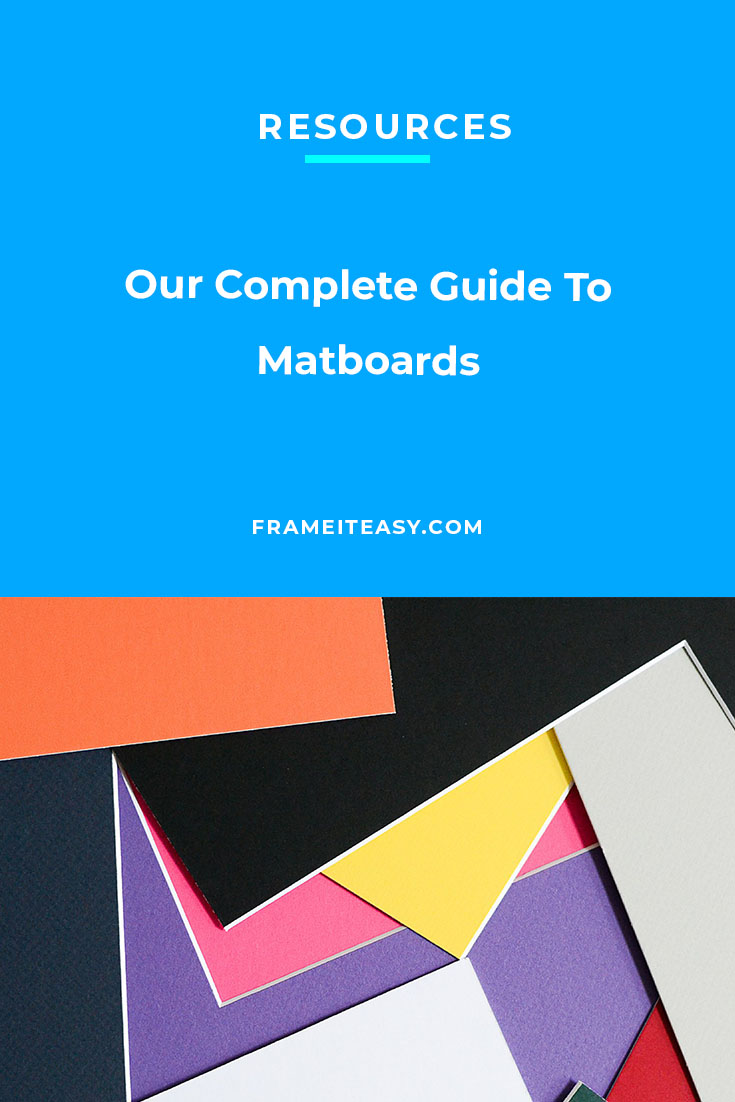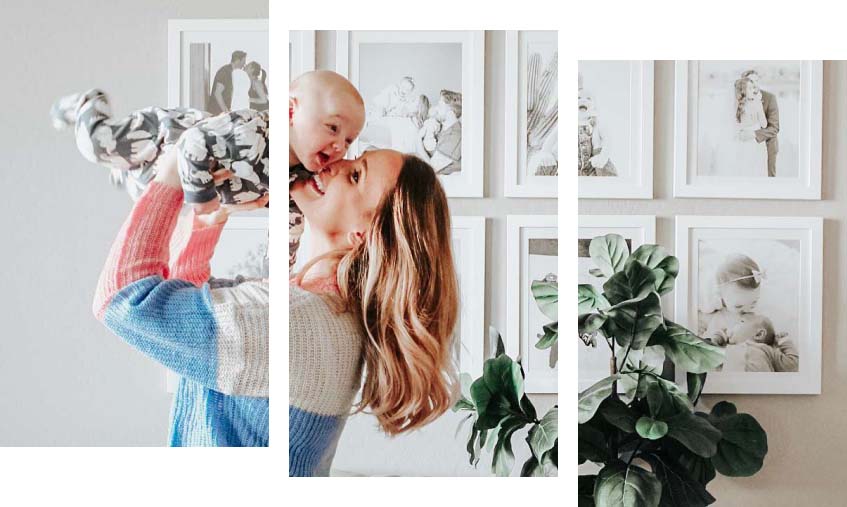When you have an important picture or piece of art, not only does it deserve a spot on your wall, but it deserves to be hung in a picture frame that will add to its beauty. For that reason, you wouldn’t want to throw your photo or art into a basic frame you got from a dollar store. Instead, create a custom picture frame and design it exactly how you want.
The designing process is most likely the best part of designing a custom frame. Here at Frame It Easy, we leave our 4-step design process completely up to you, so you can really make it your own. Part of that design process is choosing a matboard color and size that will elevate your piece.
Adding a matboard around your photo will give your finished project a decorative and personal touch, and can also help to preserve your art too! However, matboards are not essential for a frame to work, but are mostly used for an aesthetic aspect.
Framers who offer matboards do so in a wide variety of colors, and it’s really what gives you the option of making a frame that will make your poster, art, or photo pop.
At Frame It Easy we offer a wide selection of over 70 matboard options including more than 50 colors (shades ranging from green and blue to hot pink, yellow, red, and beyond!), metallics, patterns, plus premium quality conservation options, thicker plys, and 100% cotton museum-quality matting.
If you’ve been following us long enough, you’ve probably figured out there’s a science to everything. Matting is no exception. There are several details to these little pieces of colored board which include:
- Matboard cores
- Bevel Cut vs. Straight Cut
- Their PLY
- Their Lignin and Acid Content
We’ll get into those topics and more during this post, and hopefully, after reading this, you’ll be more acquainted with the art and science of matting.
Is Your Matboard Acid-Free? How to Tell If It Is Or Not.
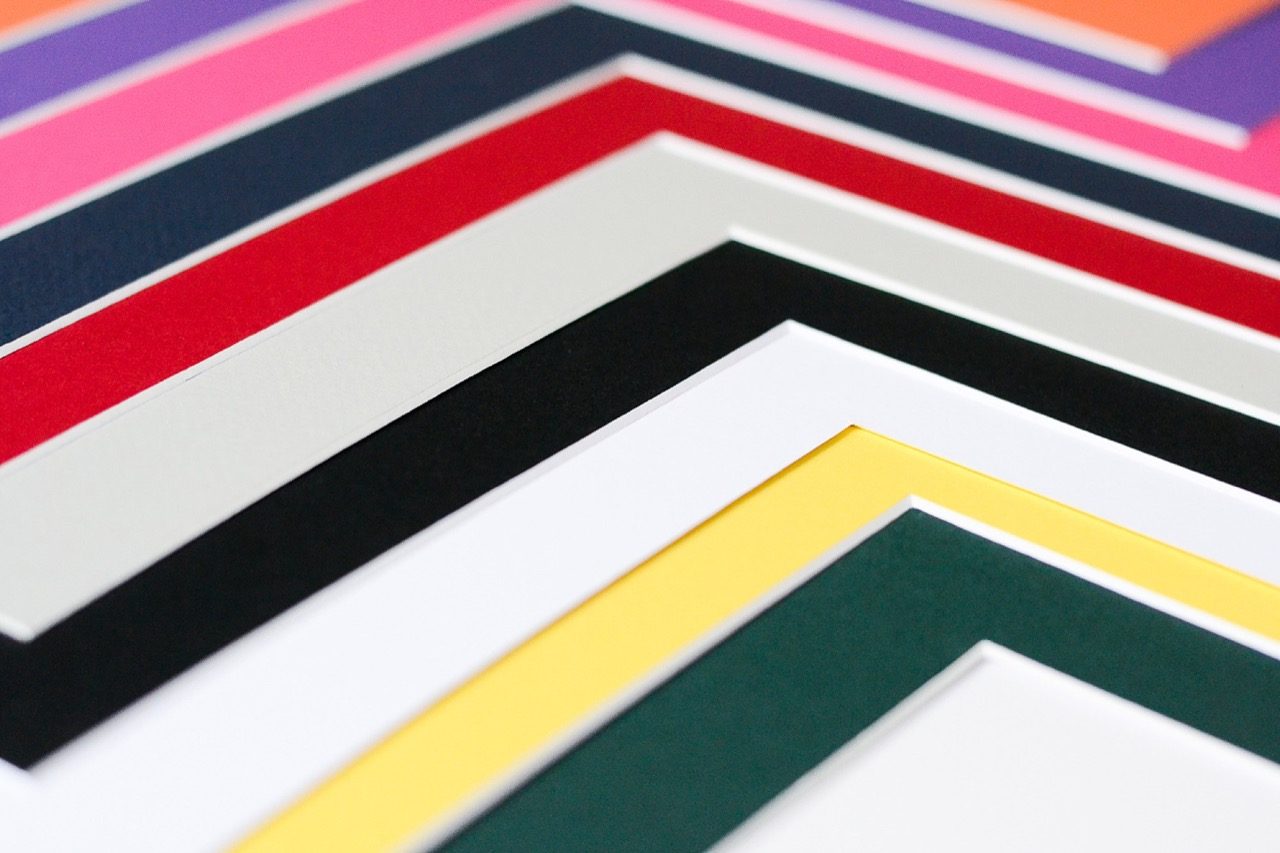
With matboards, you’ll often see the term “acid-free”. This term — depending on what site you’re on — can mean different things. First, though, let’s talk about the pH scale. Knowing what this is and what it means will help you understand matboards a lot better.
So, the pH scale runs from 0-14 — fourteen being the lowest possible acidity, such as bleach. Zero is the highest concentration.
Most matboards you’ll find are pH neutral — meaning their ranking on the overall scale is a 7, just the same as pure water. If something has a pH ranking greater than seven, it is basic; another word for this is an alkali, so less than that would be considered acidic.
That said, because a matboard with a ranking of 7 isn’t technically acidic, you’re going to see some using the term “acid-free” when they mean acid-neutral. Other times, you’re going to run into the term “acid-free” when it is, in fact, referencing a pH level greater than seven, which is a better reflection of what “acid-free” really means.
The same is true if there is a mention of alkaline buffering or something similar.
What is Alkaline Buffering, And Why Is It Important To Preserving Your Artwork?
As stated before, if something with a pH rating less than 7 is an acid, something with a rating greater than that is an alkali. If something is alkaline buffered, it means that it has been modified to have a rating greater than 7 — making it truly acid-free, and not simply neutral.
Here at Frame it Easy, our matboards have a pH rating of 7, making them acid-neutral. We do have some products, however, that are alkaline buffered to have a pH rating greater than 7, such as our foamcore, which is also important.
How Does My Matboard Help Preserve My Art?
As we mentioned above, not only do matboards offer a decorative touch to your artwork, but they can also help to preserve your art. They do this by separating it from the acrylic or glass cover to your frame. This is important because condensation can build up inside of the glass, which can result in water damage to the framed piece. These matboards lifespans can be centuries long and can preserve the artwork for generations.
These are usually used to display priceless or heirloom art. As such, if you see a photo, painting, or drawing in a museum, you can bet on it being a conservation matboard. There is also no secondary definition of this term; this means that, if a site advertises its matboards as such, they are truly acid-free, and have a pH rating of above 7.
Regular matting, on the other hand, is known as “Non-Conservation Matting.” This means that it won’t preserve your art for quite as long as its more archival counterpart. Usually, if a matboard is of the non-conservation variety, it is pH neutral or has some lignin in it, which could form to produce acid over time. This will yellow a purely white piece of paper, producing an off-white or cream color.
It must be said, though, that most non-conservation matting will do the job for the average framer. Most people aren’t looking to preserve a photo or piece of art for hundreds of years.
Here at Frame it Easy, we offer a Museum Quality matboard option. This matboard meets higher conservation standards, is lignin-free, acid free, fade and bleed-resistant, and is 100% cotton rag. Best for valuable works of art, historical photography, original documents, and heirloom needlework.
What is Lignin?
If you do enough research into matboards, you’ll probably run into the term lignin at some point — most likely in regard to whether or not a particular decorative piece of frame lining has it.
Lignin is the binding material that holds the fiber walls of many plants together — giving them a wood-like texture. It essentially performs the same function in matboards — as well as other paper-based products.
Lignin itself is not an acid. However, over time, it can produce acids. If you read the previous section, a distinction between conservation and non-conservation matting is the presence of lignin; the former has none, and the latter does.
Will How the Matboard Is Cut Affect How It Looks?
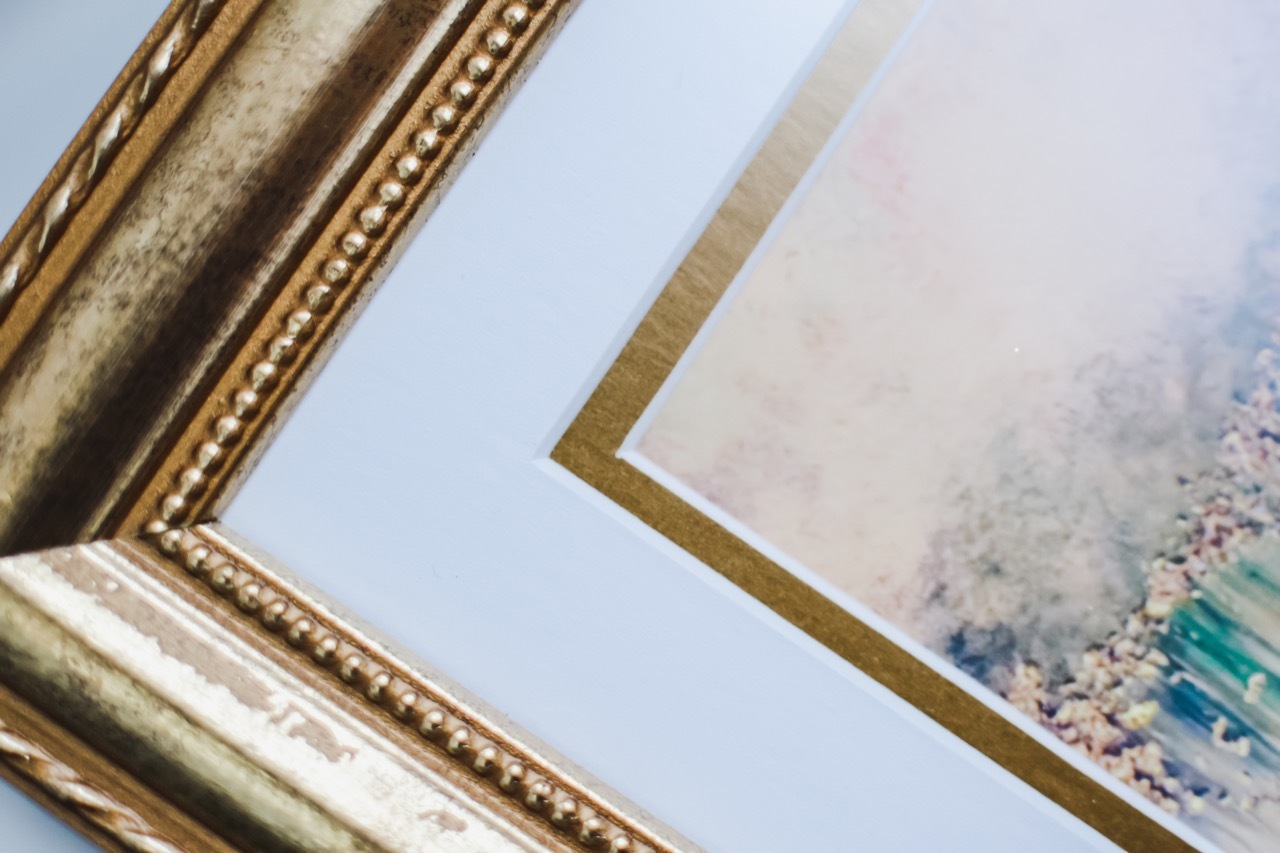
The short answer is yes, it will — angle is everything.
A bevel cut is one that is angled off. This method is used for several different things, and across multiple crafts. For instance, in woodworking, it is used to join two pieces of material. In framing, however, you’ll see it used a lot on matboards. It is the industry standard, after all. The presence of a bevel cut is also a hallmark of a professionally done matboard.
With matboards, a bevel cut exposes its core. It is essentially a 45-degree angle cut that slopes upward from the innermost edge of the matboard. It would create an obtuse angle if you combine its slope with the surface of your art itself.
A standard cut — one you would achieve with a common pair of scissors or the like — would not. The angle wouldn’t be the only issue with common household items, either; matboards are thicker than your average piece of paper, especially if it’s a variety with more depth, such as 8 ply (we’ll get to what that means in a little bit, too!). And using scissors or a common Exacto-knife could create jagged cuts, as well as frayed edges.
This is why professional tools — as well as a proper technique — are necessary. Of course, there are ways to cut a beveled edge in a matboard without specific materials. It is, however, an intricate process that requires multiple steps; and the time you spend trying to make it perfect might exceed the value of just buying one from a professional.
You wouldn’t want to display a frame with a matboard that looks frayed or jagged — or has an unexposed core. And you also want to save as much time as possible. This is why trusting professionals with the proper tools is always the best option.
How Would A Matboard’s Core Affect Your Display?
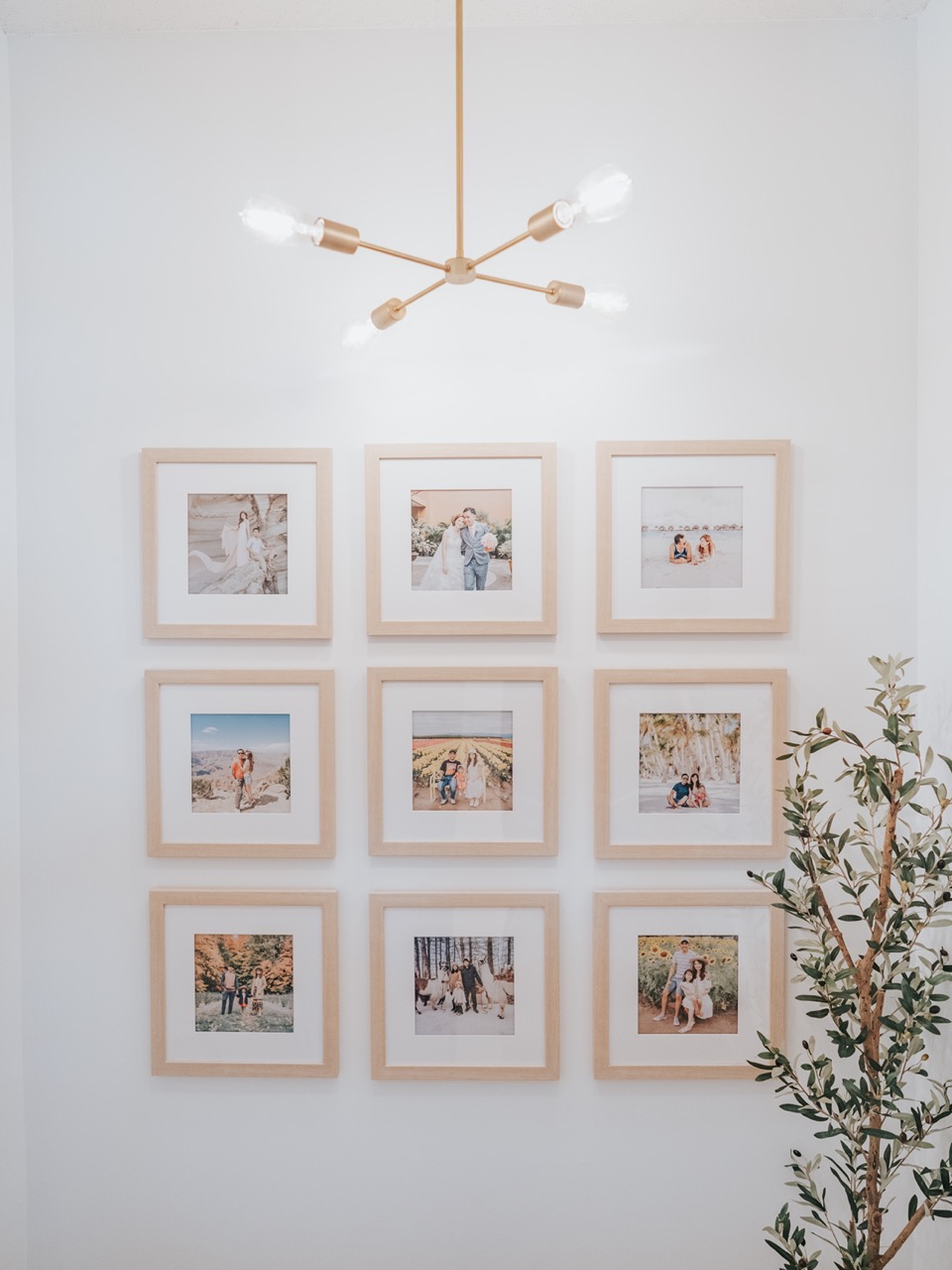
What’s a core? And why is it important to your custom frame’s matboard? You might ask those two questions when viewing our “Core” designation for our mats.
A small strip of color can have a large impact on your display. A sliver of white or black can contribute or detract heavily from your piece. And that’s all cores are — the color of the inside of the matboard. They appear as small strips of color at a matboard’s opening.
Here at Frame It Easy, we have two core color choices — white and black.
White Core
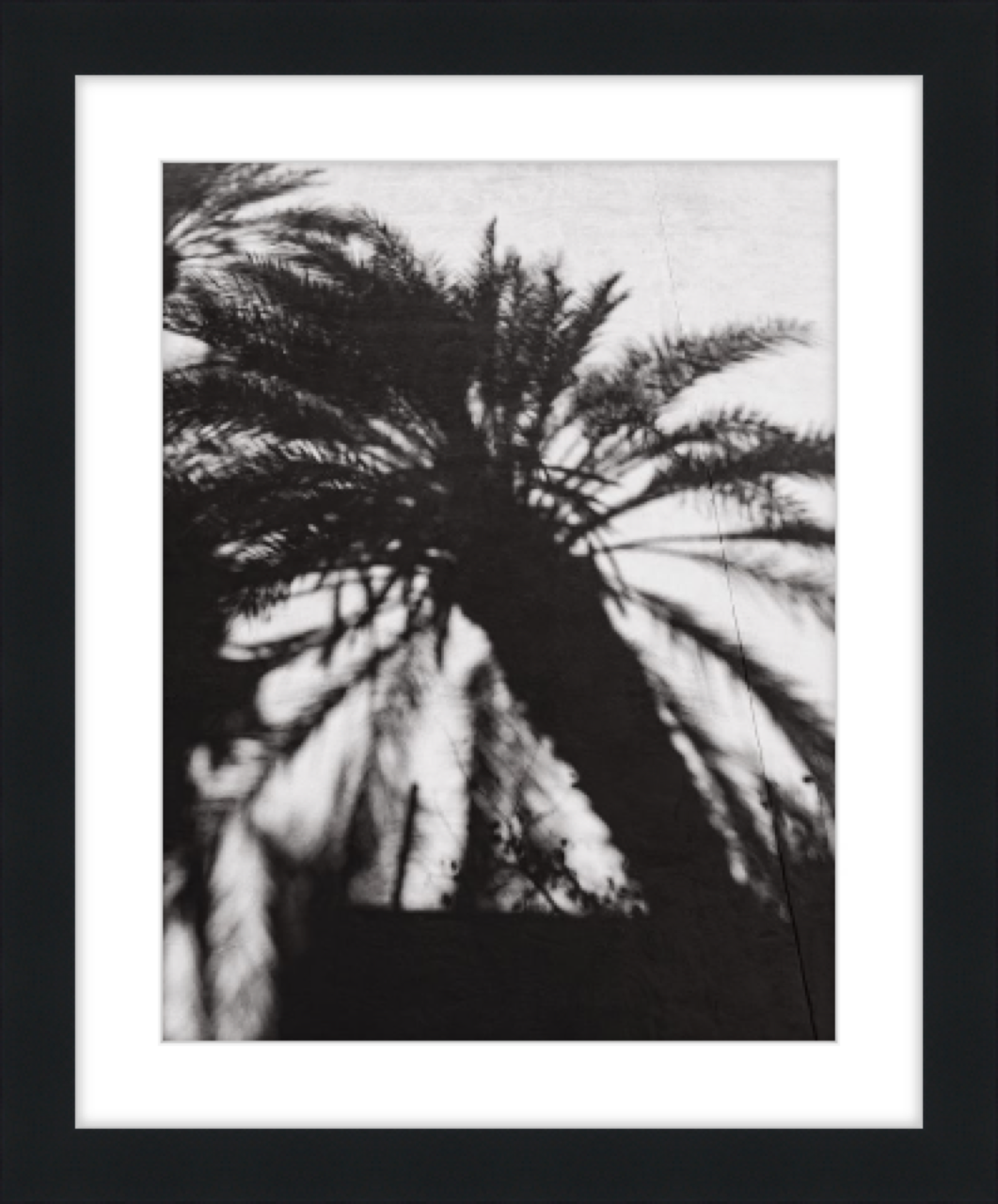
White Core matboards are one of two varieties of “Standard Matboard.” They are usually a bit more expensive than their cream core counterparts, but some people prefer the cleaner, more professional look. Others, however, prefer the lesser cost of the cream core.
This type of core has a white trim along with the interior, which will show with a proper bevel cut.
Black Core
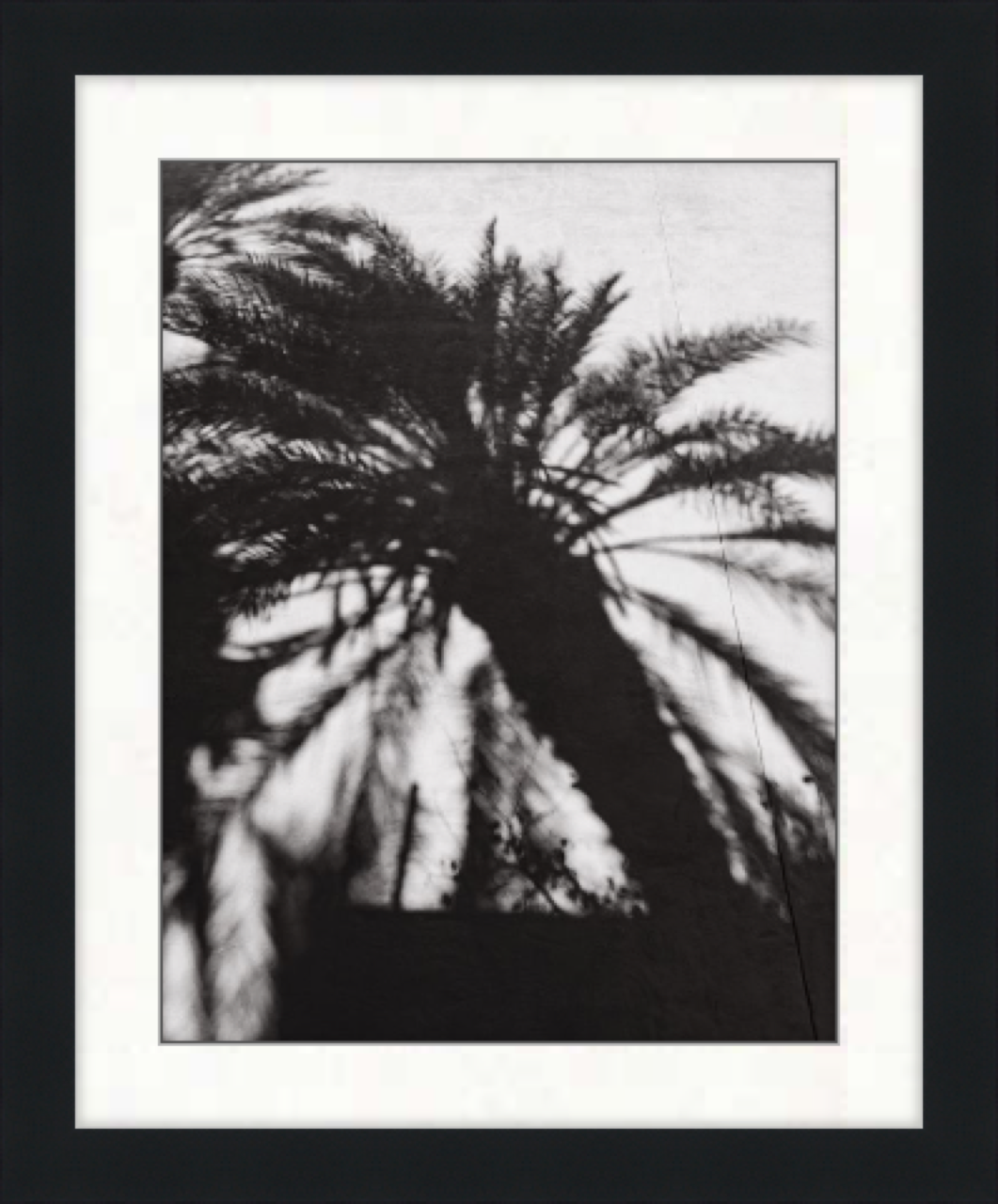
The black core matboards are the second variation of the “Standard Matboard.” Matboards with cores of this variety are usually priced around the same as the white core — the other standard core color.
This type of core has a black trim along the interior when it’s cut with a bevel, as you can see in the photo featured above.
What Does PLY Mean?
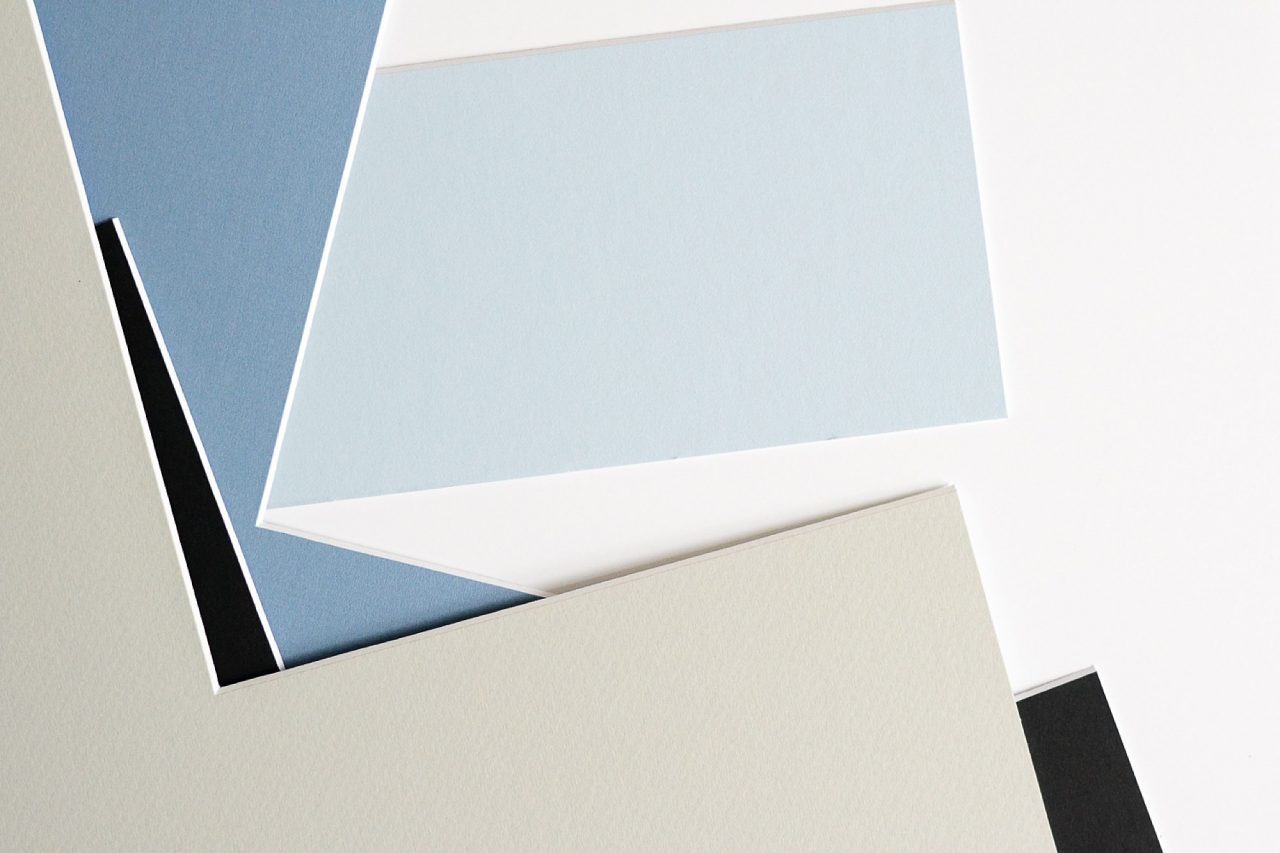
In matboards, as well as with some other products, you’ll hear the word “ply” thrown around a lot. Ply just refers to a matboard’s thickness.
There are still varying tiers that a matboard could be in terms of its ply; you’ll most often run into 4 and 8 ply. Four-ply is 1/16″ thick, while 8 play is 1/8″ in depth. There are also less common thicknesses, such as 6 ply, which would be between 1/16″ and 1/8″ in thickness.
Here at Frame It Easy, we offer a variety of thicknesses, giving you the flexibility to customize your matting any way you’d like. Our standard white core and black core is 4 ply (1/16″ thick). We also offer a 6 ply (1/12″ thick) matboard in Black. Our thickest option is 8 ply (1/8″ in depth) available in White Sail, Super White, and Jet Black.
Single Matted Frames
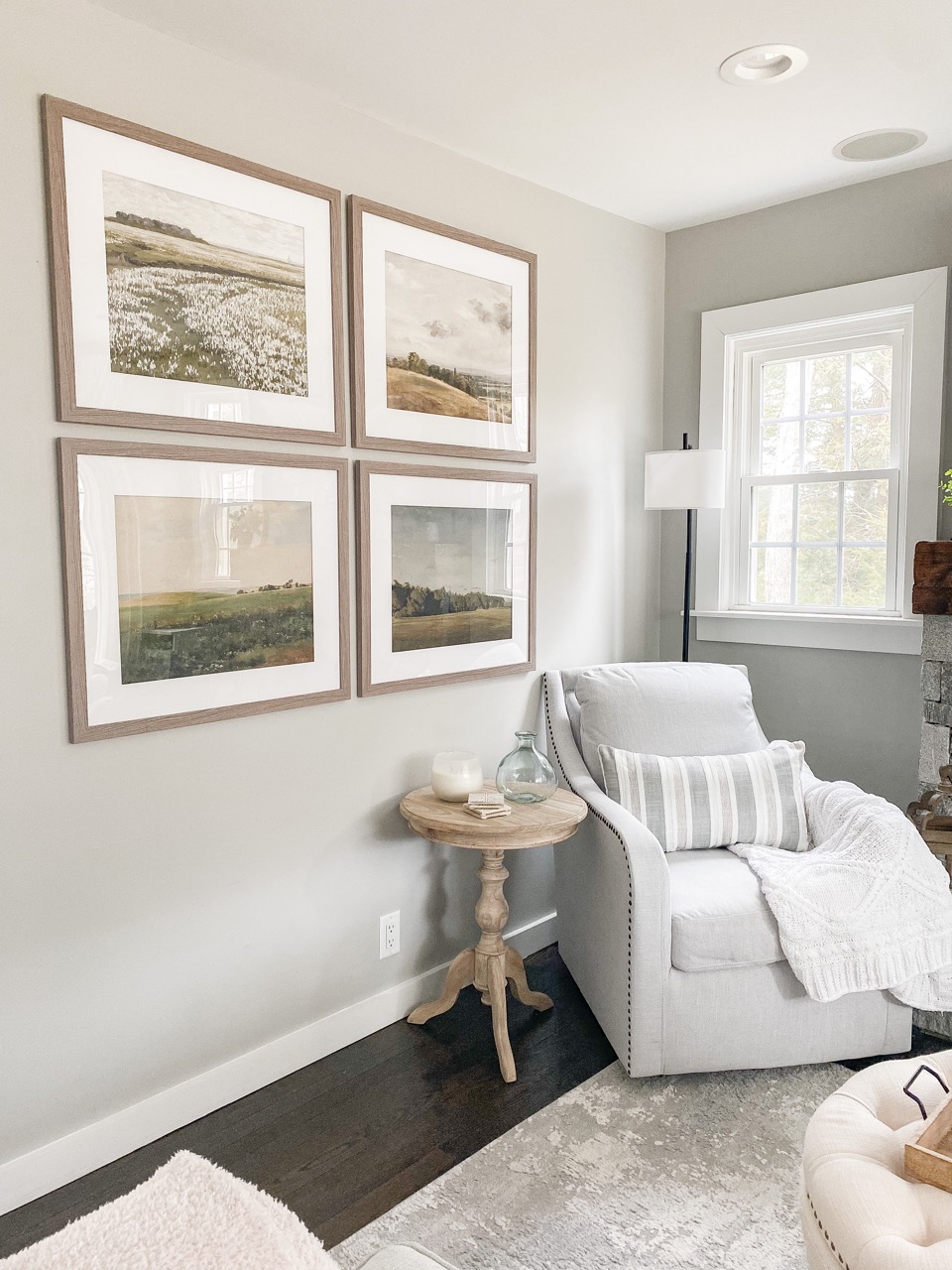
Single matted frames are, by our estimation, the most popular choice. They make up a majority of orders with matboards for our business, at least.
If you’re not ordering from us — or sourcing a matboard elsewhere — you would just need to make sure you know what ply matboard you’re receiving, and the thickness of your frame’s rabbet. Once you know that, and the thickness of your artwork itself as well as the backing and cover, you should be able to do some quick math to figure out if your matboard will fit.
If you have thicker art and want to add a matboard, try a lesser ply. If your artwork is thin, though, you should have a bit more leeway.
Double Matted Frames
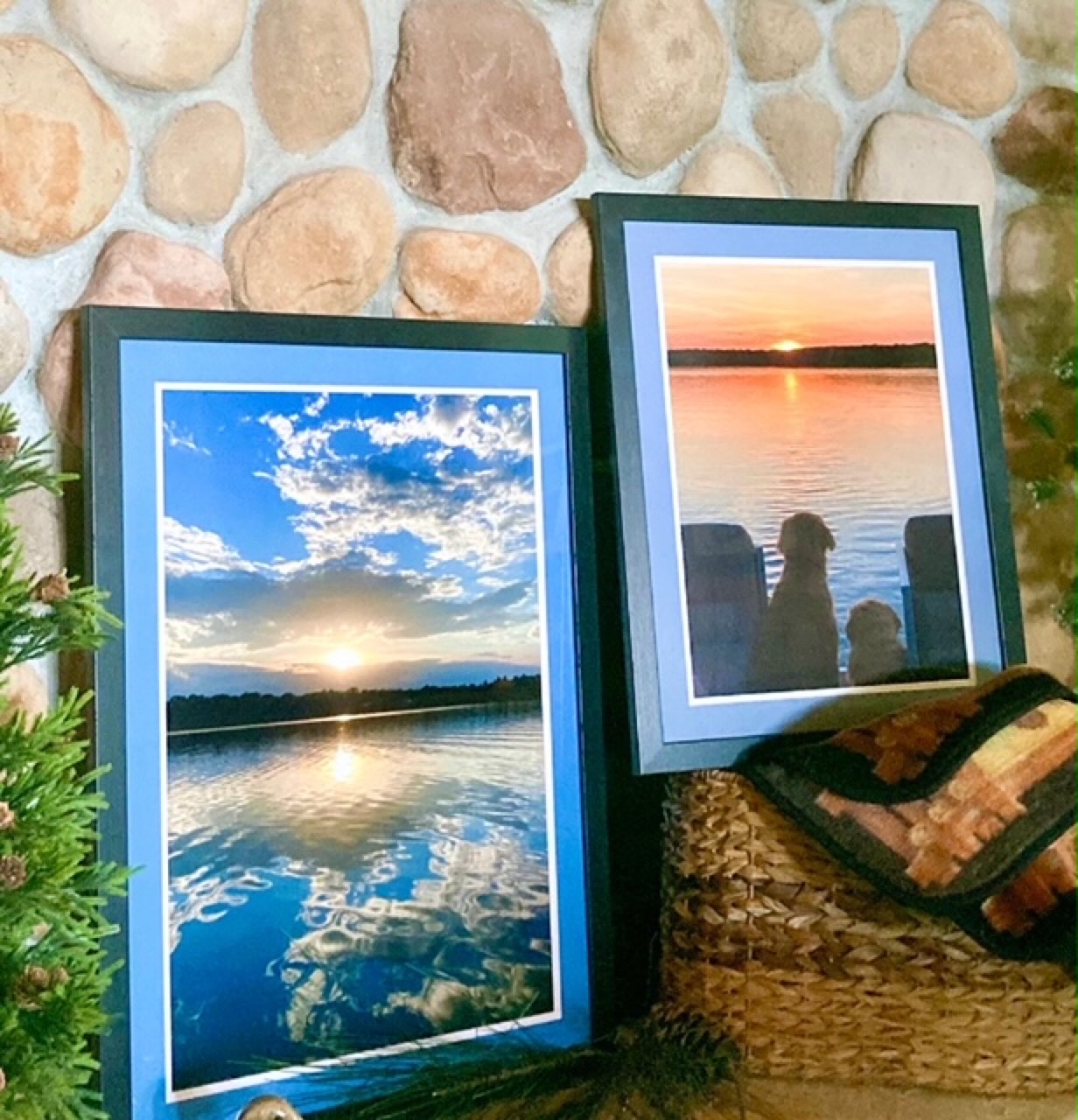
Double matboards are also a popular choice! This just means you can add two different colored matboards to your photo, one usually bigger than the other, in terms of inches visible.
Double matboards also allow you to have a lot more creative options. Another matboard means more color to your overall display; you also get to decide how much of the second matboard you want to be exposed.
Most of the time, the inner matboard is less visible than the outer one; the outer one would be 1 1/2″, for instance, while the inner would be 1/4″ — at least when everything is in the frame.
Oval Openings
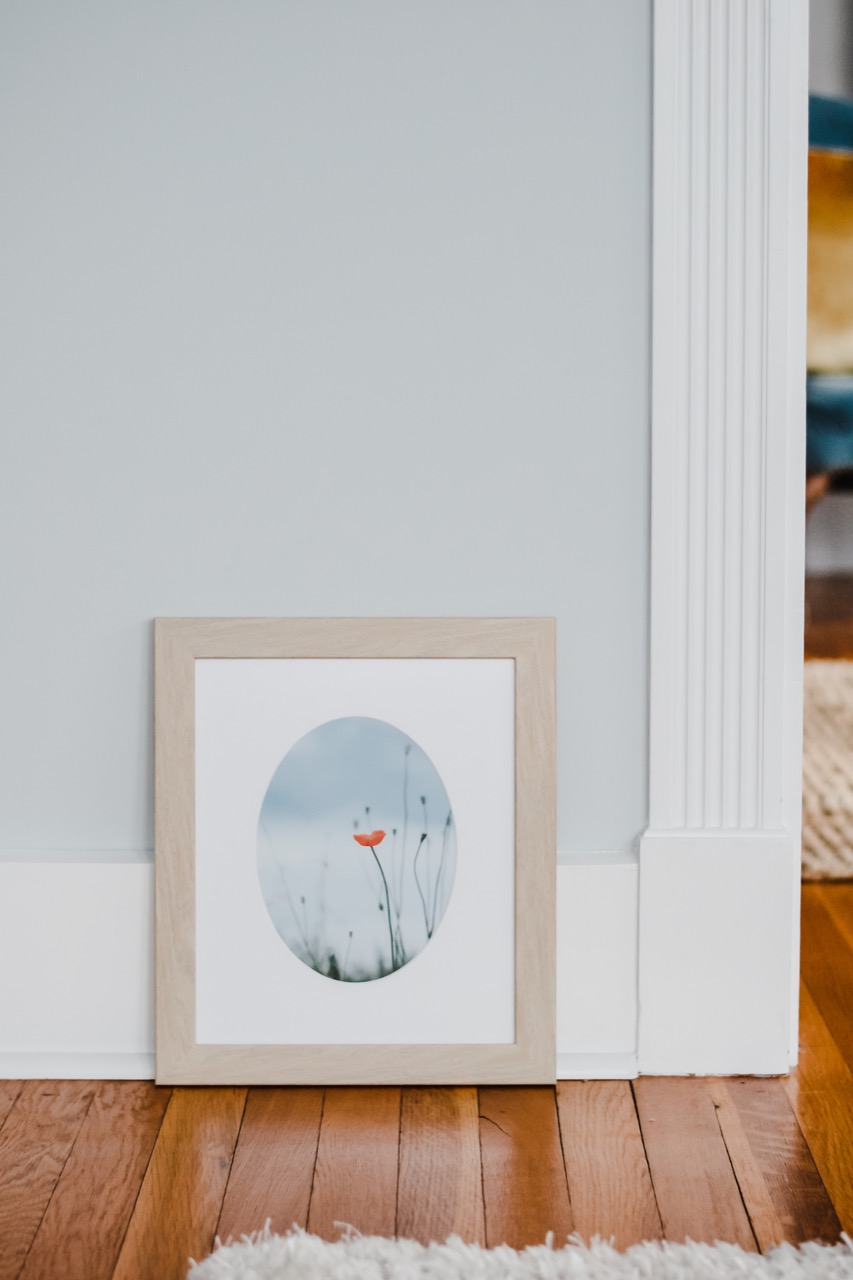
Matboards come in all sizes, but the pieces of the material themselves are almost always square or rectangular. That doesn’t mean you have to choose a square or rectangle opening, though.
There can be some difficulties with measuring this, however. Circles are odd shapes, and tape measures and rulers don’t conform to them. And the math to calculating circumference can be, well, not easy —which clashes with our motto.
Not to worry, though! You can use a cloth tape measure, which will easily conform to the shape you want it to take, without it bending and creasing every time you try to move it.
Other than the difference in the measuring method, everything is the same for this type of opening. The opening will be cut with a beveled edge, which will allow you to view your matboard’s core.
Here at Frame It Easy, we put a 1/4″ overlap into our circular matboard openings, too. We do this by removing 1/2″ from the circumference. So, if your matboard is ordered for a piece of art with a 20″ circumference, the matboard opening will be 19 1/2″ all the way around.
The oval shape is not offered directly on our Frame Designer, however, so it will require an extra step. To do this, head over to our Matboard page, where you will be able to input the exact inside and outside measurements that you want your matboard to be. For example, in the photo above the inner dimensions of the matting are 6″ X 8″ and the outer dimensions are 10″ X 12″ with an Oval opening shape.
Offset Matting
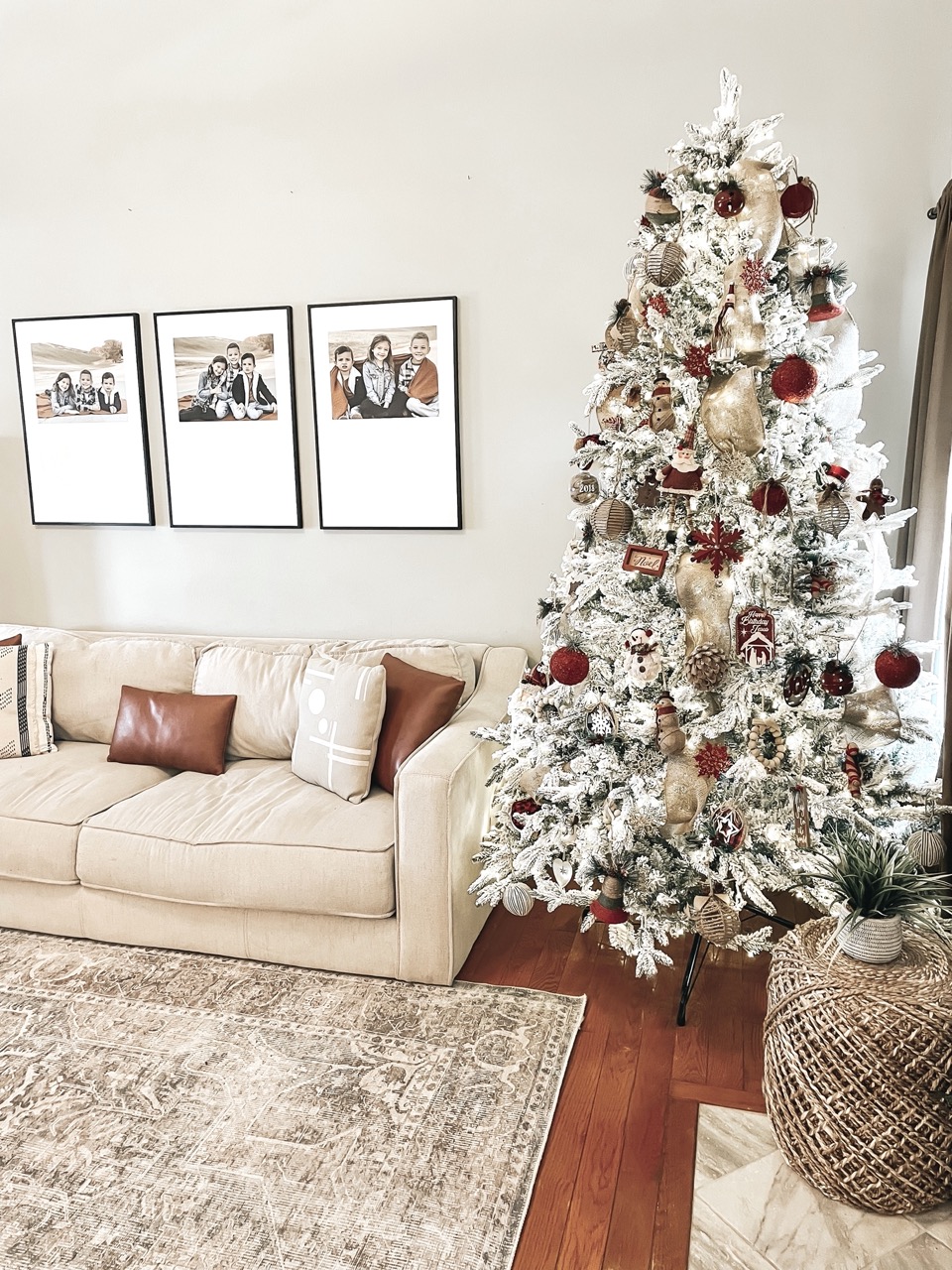
While we don’t offer this here at Frame It Easy, and you won’t be able to achieve this look with an actual matboard, you can still get this look by creating a digital matboard. To do this you will need to use a site such as Canva, which we have a tutorial on, and it will only take you about 10 minutes. Canva will then allow you to save your photo and digital matboard to your computer, where you can upload it directly to our site, for easy framing.
Should You Get a Matboard With Your Frame?
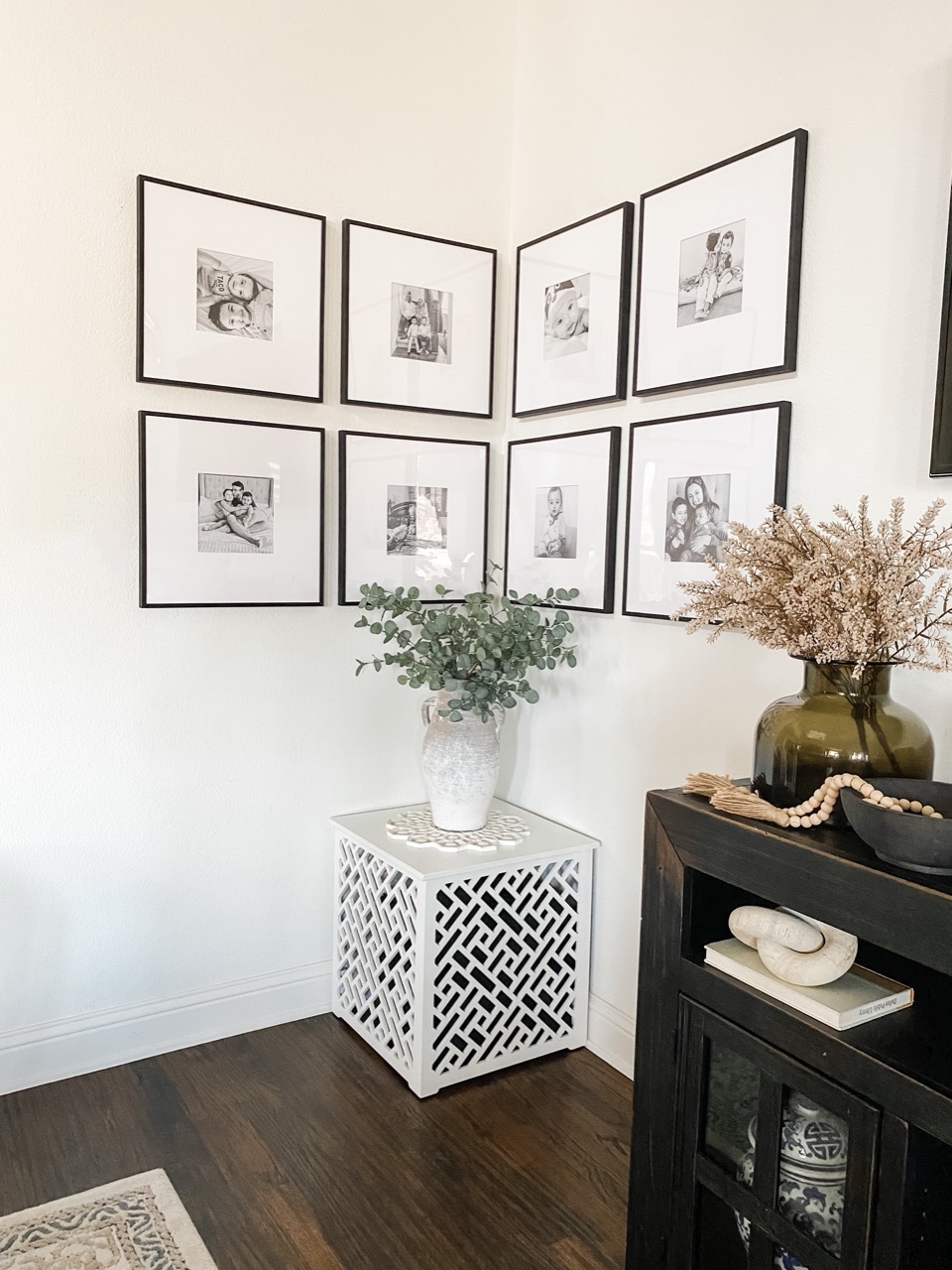
So, now that you have all this information, there is only one question left. Should you add a matboard to your framing project? Just as we always say when it comes to home decor, the choice is completely up to you! As we mentioned before, there are two sides to a matboard, the aesthetic side, and the functional side.
From a functional standpoint, we’ve gone over the thickness of art versus rabbet depths quite a bit. But we’ve not discussed the measurements of your art — its width and height. And that is just as important.
While larger matboards exist, most framing businesses purchase them in sizes of 32″ X 40″ — making that the industry standard in default size. So if you have art larger than that, matting won’t work for this project, and probably won’t be necessary either.
There’s also the aesthetic standpoint: Do you have any color you want to complement in your print? Or can you find a matboard that can complement that color? If the answer is yes to both, then you likely should. If not, let your art stand alone in its frame.
Final Thoughts
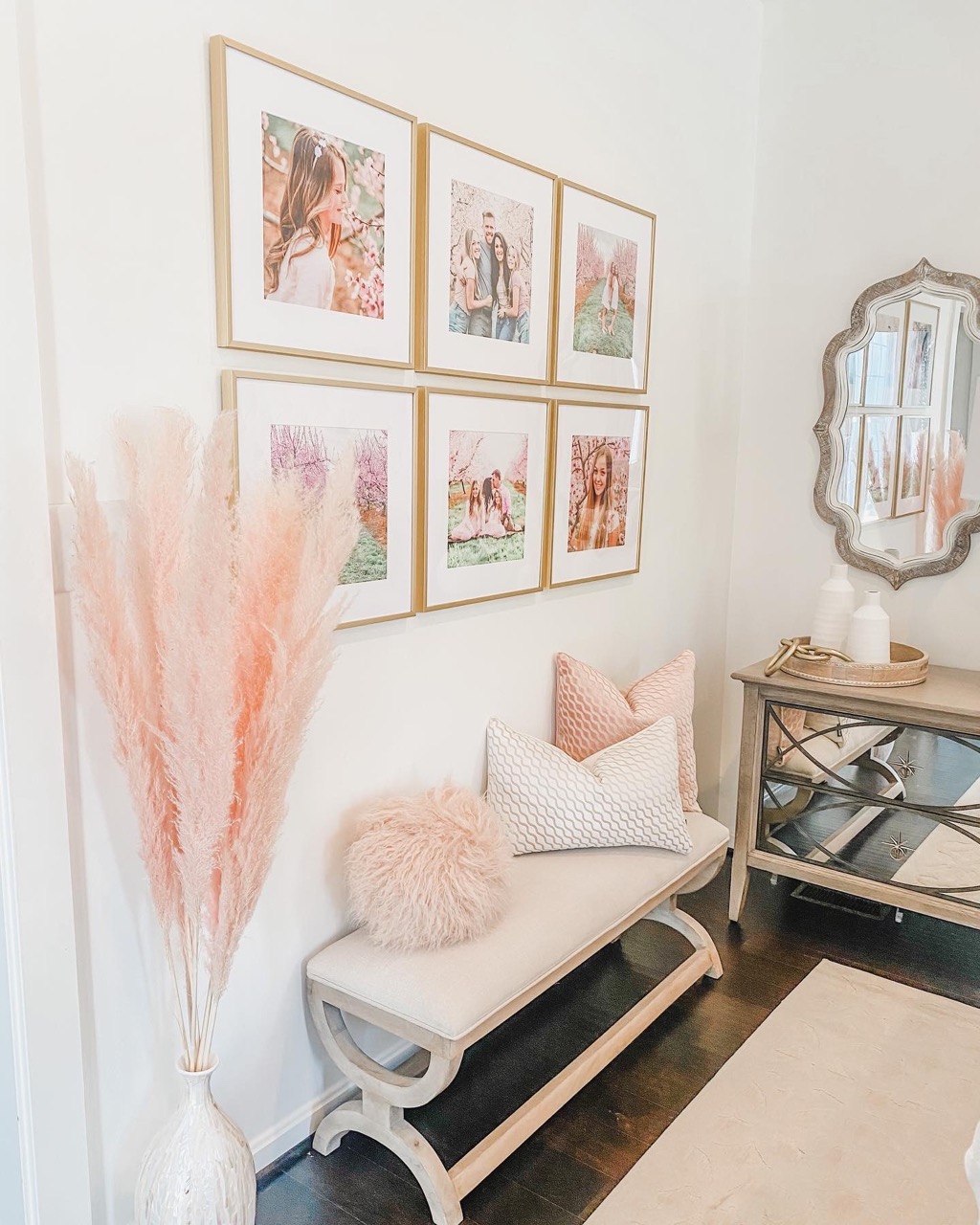
Matboards are a tertiary part of framing. You don’t need them for a frame to work; they’re not essential hardware or material. But they sure can bring an entire piece of home decor together — making for a great focal point in your kitchen, living room, bedroom, or some other location in your home.
That said if you want a matboard in your frame, but you just aren’t quite sure how to go about it, remember these basic things, and they should help you along the way to perfect framing:
- Acid-free and acid-neutral are different.
- Lignin is less than ideal if you want to hang your artwork in a museum for centuries, but shouldn’t hinder your average framer looking to display a family photo.
- Remember the two core choices — white and black.
- Ply refers to a matboard’s thickness.
- The most important thing about your frame is whether or not you like it.
Of course, don’t forget to share your finished project with us on social media so we can see what you came up with!
